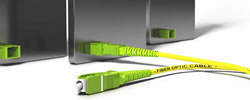What is Wi-Fi 7? The New, Faster Standard!
Wi-Fi 7 is the latest innovation in Wi-Fi standards. Wi-Fi 7 takes speeds to a new height, with speeds up to 5.8 GBPS, according to Intel. Wi-Fi 7 also allows for multiple connections, providing speed and stability. For users, this means more reliable and more responsive Wi-Fi connections.

Wi-Fi 7: The 4-Lane Highway
- Wi-Fi 7 (also known as 802.11be) turbocharges speeds by packing more data into each transmission.
- Imagine your old 2-lane road—efficient, but sometimes congested. Now, Wi-Fi 7 rolls in with 320 MHz channels, doubling the size of previous generations. It’s like your 2-lane road magically expands to a 4-lane highway!
- Result: A potential maximum data rate of nearly 5.8 Gbps for your typical Wi-Fi 7 laptop. That’s 2.4 times faster than Wi-Fi 6/6E’s 2.4 Gbps.
4K QAM: Self-Driving Cars in Each Lane
- 4K QAM (Quadrature Amplitude Modulation) is the secret sauce. It densifies data signals.
- Picture self-driving cars crammed together in each lane, maximizing space. That’s 4K QAM—embedding more data than Wi-Fi 6/6E’s 1K QAM.
- Result: High-quality 8K video streaming becomes seamless, and massive 15 GB file downloads take just around 25 seconds (compared to a whole minute with older Wi-Fi tech).
MLO: The Wi-Fi 7 Supercar
- Legacy Wi-Fi devices are like cars that stick to one highway at a time, switching routes if traffic gets heavy.
- But Wi-Fi 7? It’s a supercar! It simultaneously cruises on two highways, boosting speeds through aggregation.
- Result: Faster data transmission, like a supercar weaving through traffic.
Deterministic Latency: The VIP Lane
- Imagine identical cars driving on both highways. They ensure at least one of each type reaches the destination.
- And the most important cars? They take the lane with the fastest route—guaranteeing critical traffic isn’t delayed.
- Result: Ultra-low and precise latencies, like VIP lanes for essential data.
So, Wi-Fi 7 combines speed, reliability, and efficiency—making your digital journey smoother than ever!

WiFi 7 Growth Projections
Industry forecasts predict a rapid expansion of the WiFi 7 device market over the next five years. By 2028, the global market is expected to reach $15 billion, with a compound annual growth rate (CAGR) of approximately 45%. This accelerated growth is driven by several key factors:
- Demand for Technological Advantages: The high speed, low latency, and enhanced stability of WiFi 7 are particularly appealing to enterprises and consumers, especially for bandwidth-intensive applications such as AR/VR, cloud gaming, and 4K/8K video streaming.
- Wide Application Scenarios: WiFi 7 is anticipated to be extensively utilized beyond homes and businesses, including in smart cities, industrial internet, telemedicine, and other emerging sectors, further driving market demand.
- Device Upgrade Cycle: As WiFi 7 technology becomes more widespread, many homes and businesses will gradually replace outdated equipment with new WiFi 7-compatible devices, thereby increasing the market size.
During this device upgrade cycle, telecom operators will need to find ways to test, benchmark and qualify Wi-Fi 7 devices. As new devices come and customer-returned devices are returned to operators, having a way to do this testing will be critical to daily operations. Current testing technology deployed for Wi-Fi 7 CPE testing will need to be upgraded in order to support the demand for Wi-Fi 7 gateways, routers, DOCSIS and PON devices. Promptlink’s new CPE Atlas+ offers a way for warehouses, labs, and logistics teams to test and refurbish these devices.
Contact Promptlink today for more information on how you can be prepared and future-proof for Wi-Fi 7 and other new technology.

DOCSIS 4.0: Ushering in the Next Generation of Cable Internet
What is Wi-Fi 7? The New, Faster Standard
Trends in Set-Top Box Deployments
How Network NoiseHawkAI Is Changing Network Monitoring
Deciding if Automated Testing is Right for Your Application
Using AI Technology to Automate Pinpointing Upstream Noise
Pandemic-Related Component Shortages and the Impact Across the Broadband Industry
What is Wi-Fi 6 and Why is It Important?
What is CPE and Why Does It Matter?
Rural Broadband and FCC Expansion Explained
The Challenges of Monitoring Upstream Noise in a Remote PHY Environment
Why Promptlink Automated STB Solution is Right for You
What is broadband network noise and why is it difficult to find?
How Do You Measure Network Health and Performance









